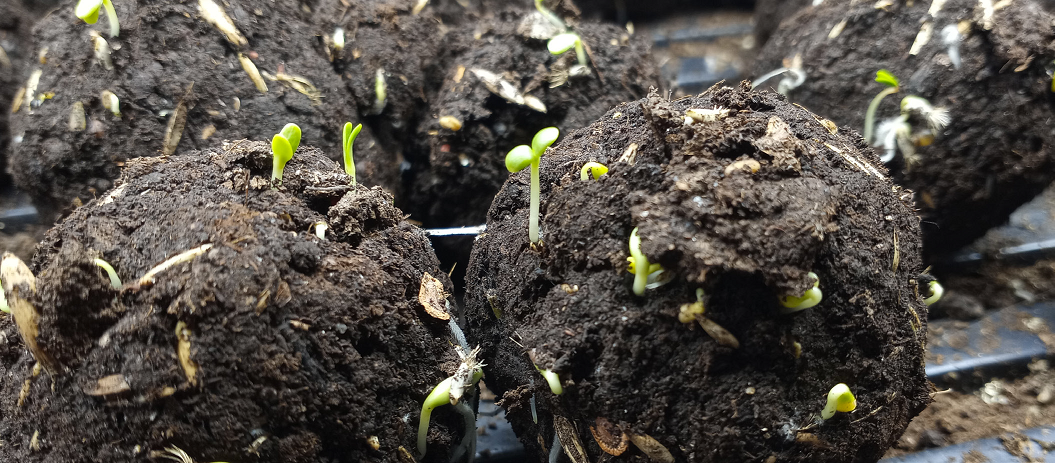For the health of our communities and our ecosystems: less asphalt, more flowers!
Seed bombs are a guerrilla gardening practice that enables us to reclaim vacant or excessively grassy urban spaces. This practice promotes local biodiversity, offering a simple and tangible means to support pollinating insects, combat heat islands and air pollution, prevent flooding through improved soil water retention, and slow the spread of invasive species. By introducing native, melliferous, medicinal, and edible plants to our neighborhoods, we can green our communities effectively!
There is more than one method for making seed bombs, and we'll introduce one here. However, don't hesitate to explore other tutorials on platforms like YouTube for additional guidance!

The choice of seeds
To have a positive impact on biodiversity, it's essential to prioritize native wildflower seeds in so-called Canada. Alternatively, you can use seeds from introduced plant species that have successfully naturalized. These plants play a crucial role in local ecosystems by serving as primary sources of habitat and food for pollinating insects. These insects are vital for our food systems, and their presence sustains a complex web of ecological relationships necessary for the health of our ecosystems.
Here are some plant species to consider when creating your seed bombs: Goldenrod, New England Aster, Tuberous Milkweed, Yarrow, Agastache Fennel, Rudbeckia, White Immortelle, Fistulous Monarda, Heliopsis False Sunflower, Biennial Evening Primrose, and Narrow-leaved Willowherb.
Harvest your own seeds!
The practice of seed bombs invites you to open your eyes to the diversity of the plant world, encouraging you to truly observe the omnipresent plants in our daily lives. An urban wasteland is a world waiting to be discovered. You can collect seeds from species that captivate your senses and contribute to their dispersal.
Download an app like Seek to identify the plants you encounter on your path, and equip yourself with an envelope or paper bag to collect the seeds when they mature. How do you know if seeds are ready for harvest? Develop your sense of observation and revisit the same places often to sensitively experience plants throughout their life cycle. This exercise helps you build relationships and connect with the urban landscape, opening up possibilities for redefining our relationship with the world by connecting to a temporality other than the frantic pace of capitalist production.
Instructions
In a bowl, thoroughly mix 1 cup of seeds with 5 cups of compost and 2-3 cups of clay powder.
Gradually add water while mixing until you achieve a texture that allows you to roll small balls (approximately the size of a falafel) in your hands, ensuring they can retain their shape.
Gather your friends, share your seed bombs, and set out to disperse them on urban wastelands, vacant lots, sidewalk ledges, roadsides, cycle paths, alleys, water wells, and even in your neighbors' abandoned flower pots!
To maximize the success of your action, launch your seed bombs in areas where vegetation isn't too dense, and choose sunny locations. Timing your seed bombing just before a rainy day is even more effective!
Don't forget to label your seed envelope with the name of the plant, the year, and the place of your harvest (so you can return to it the following year!). Store your seeds away from light and humidity.
Where to throw your seed bombs?
It is important not to throw your seed bombs in conservation areas, such as protected areas, ecological reserves, or even national parks. Doing so risks introducing plant species that are not initially found there, and their presence can jeopardize the integrity of populations of already threatened or vulnerable plant species.
